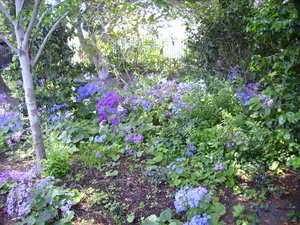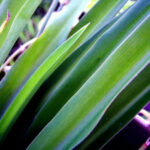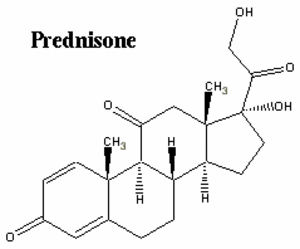Most of us in the West who have trees growing around our homes thoroughly enjoy having them. What is a little bit trickier is figuring out exactly what to grow underneath the trees that won’t harm them.
If you are lucky enough to have native trees, then what to plant beneath them can become problematic. If you put plants under them that need a lot of water, then you risk overwatering your trees, which can lead to root disease, rot, and eventually death.
That’s where the dry shade garden comes in.
What is a dry shade garden? Simply put, it’s plantings that thrive in the shade without a lot of water – we’re talking maybe a little sprinkle once or twice a week. There are plenty of plants that will do well, both native and non-native, in such conditions, and will remain lush and green even during the driest months.
The secret? Finding a few good plant lists. And thanks to the Internet, such lists are easy to find.
The advantage? Your trees will be healthier, and your water bills lighter. And the cool, comfortable area under the trees will be much more attractive.
However, you may have to eschew the typical garden center and seek out nurseries with a healthy selection of drought-resistant and native plants in order to create your dry shade haven.
In addition, some experimentation may be needed to see which plants do best, and in which locations.
According to the California Gardens website (www.californiagardens.com), coast live oaks are especially susceptible to the effects of overwatering. “The oaks may not show stress immediately, but over 10 to 20 years it can spell disaster,” it notes. “In the interim, the oaks keep looking worse and worse. And the risk of the tree falling on people increases dramatically.”
In addition, the overwatering in addition to fertilizing can destroy the naturally existing fungi and microbes in the soil, which are essential for the health of the trees. Remember that the tree roots extend beyond the spread of the limbs, so your dry shade garden can come out a bit further than the shade line.
Also keep in mind that some plants do well in deep shade, some in light shade or filtered sunlight, and some plants that typically do better in full sun will do okay in light shade. However, you may find that some plants won’t flower unless they get sufficient sunlight during the day, although they’ll grow fine in other ways.
Before you put plants in the ground, spend some time observing your potential shade garden to see which areas get some sun and which get little to none. This can make a difference in which plants you buy and where exactly you’ll place them. You may even be surprised at how sunny some little places might be at certain times of the day when the sun is low, like early morning and late afternoon.
Here are some ideas for plants that are happy in a dry shade environment:
• Ferns are an ideal plant for underneath oaks or other trees. California garden expert and TV personality Dave Egbert recently designed a shady yard, retaining the Western sword ferns that were already there, and adding Mexican feather grass, dymondia groundcover, flowering currants and ceanothus. “The plantings are more compatible with the native oaks and pines,” he writes on his blog on Firesafe Garden.com.
• Succulents are another great choice, and with thousands of forms, shapes and colors to choose from, there will be plenty of ideas. These are attractive grouped in any number of ways: with other succulents, with flowering plants, or with grassy plants like New Zealand flax.
• A wide variety of native plants can be used in dry shade gardens, some with beautiful foliage or flowers. Some that are mentioned on the Las Pilitas website (www.laspilitas.com) are Sierra and Douglas iris (the first yellow, the second purple), wild ginger with its heart-shaped leaves, white-flowering alumroot, California honeysuckle, sticky monkeyflower, yerba buena, California fuschia, and huckleberry. There are many more as well.
• Other blooming accent plants that you might consider, according to the McShane’s Nursery & Landscape Supply website (www.mcshanesnursery.com), are angel wing begonias, impatiens, pansies and African daisies.
Las Pilitas Nursery, a native plant nursery in Southern California, also recommends on its website that you water the foliage of the plants in your dry shade garden rather than the ground, and to keep watering to a minimum. Also, refrain from tilling this garden, since it could damage tree roots.
Gardeners can use a mulch of wood chips or compost around the plants to retain moisture, or just let the tree leaves fall as a natural mulch.
Sources:
Personal experience
www.firesafegarden.com
www.laspilitas.com
www.mcshanesnursery.com






